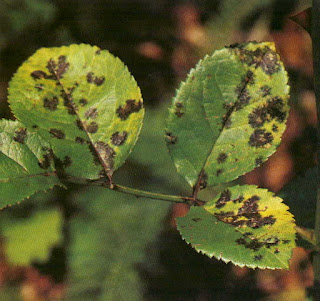On a recent trip to London, I found myself looking in people's front/back yards and visiting as many gardens as possible. I'd been there before, so I was familiar with the larger gardens (the Kew, for example), but this time, I thought about those smaller spaces that city people fill with whatever plants will fit. Londoners are good at this. Some windowsills overflowed with ivies and pansies, even though I couldn't see evidence of a windowbox. Outside front doors, baskets of petunias added some bright colors to normally dingy brick buildings. Pubs were especially cheery with hanging baskets, and roses bloomed in every square foot at the base of stairs leading into apartment buildings and offices. But my favorite place was Kensington Gardens.
We walked from Buckingham Palace through Green Park (where we sat in deck chairs to watch streams of people passing by -- they charge for the deck chairs, but on a hot day in London, we happily paid the one pound five pence). Then we wound our way down along Bayswater Road, enjoying the vendors with their artwork and admiring the stately hotels on the other side of the street. At Hyde Park, we competed with groups of people who had come to the park for the triathlon being held that day. Every major throughway was roped off so that bicyclists and runners could make their way to the end of the race and the tents set up near the Serpentine. We sat at the Serpentine Restaurant for pizza and Cokes, watching Londoners in paddleboats on the lake before continuing our journey.
Little did we know how long our walk was, but by the time we reached Kensington Palace, we were ready for some cold drinks and rest. It was the perfect place to sit for a moment. Princess Diana's favorite place and her home while in London, Kensington is a smaller Palace, but no less stately than some of the others in England. The gardens are formal, Italian in design, yet they have whimsical elements brought in by Queen Victoria and enjoyed by Diana herself. When we were there, archways leading to the gardens, were alive with what appeared to be grapevines, and the gardens bloomed in hot pinks, reds, yellows, and deep purples.
Of all the parks in London, this appeared to be the most family-friendly, probably because of the playground area built to memorialize Diana in 2000. Because it was such a nice day, the area was full of happily-screaming kids climbing all over the pirate's ship and shimmying like eels over and around the other structures in what appeared to be the best public playground I've ever seen. (We were not with children, so didn't get to explore in detail.)
Today's poem celebrates English gardens:
English Garden by Bernard Shaw
My love for an English garden,
It knows no bounds.
I will never have to ask for pardon,
As I stroll these lovely grounds.
Many are the shrubs, bushes and flowers,
They fill my heart with joy.
Here I have spent many happy hours,
For most of the flowers are shy and very coy.
Hollyhocks abound in every colour and hue,
Great delight I find in every nook and cranny.
A few of the flowers are for me new.
Most of the names I was taught by my dear Granny.
I have wandered around gardens of all kinds,
In most parts of this wonderful Earth.
There is something in a garden that my soul binds,
Nature shares with me every new birth.
But in an English garden such as Kew.
Gardeners put on a wonderful show.
That refreshes me through and through,
As I am sure it will you if you take the trouble to go.



